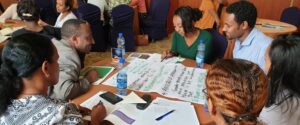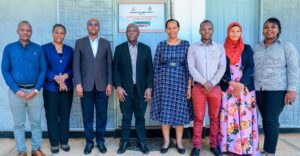Navigating the wealth of Open Access resources
Open Access resources have become increasingly common in recent years, with a wide range of supporters from researchers to publishers and international organisations such as UNESCO. While this can greatly improve a resource’s availability, it is equally important to increase the accessibility and visibility of these resources if they are to make a greater impact.
Open access is a key area of interest for INASP and for many years we have been collecting and displaying information about the growing number of resources available on our website.
As we have recently launched our new website we were given a great opportunity to reflect on what we are listing, why it was important to list these resources and how we can best display them.
Why are we listing Open Access resources?
There is a growing wealth of open access resources available that can provide valuable information for researchers and librarians globally – so we saw the website as a good space for INASP to share these resources with our partners and colleagues in developing countries.
A few reasons INASP displays a list of Open Access resources are:
- To build awareness of current research: Open Access resources are an important addition to those available via institutional subscriptions or access initiative such as those administered via INASP, eIFL and Research4Life
- To inform budget decisions in the selection of e-resources: Where budgets are very limited (or even non-existent), being aware of what is available via all sources becomes really important, particularly in deciding where money is spent
- To increase access and use: In institutions without library catalogues we hope that pointing to a resource list, such as the one we produce, will help researchers and librarians to easily find and access what is available
- To improve visibility and dissemination of research: publishing research Open Access increases its discoverability, especially through media and citation, and has a stronger outreach as it can be accessed both by academics and the public. It’s therefore very important to make Open Access research easily discoverable. We hope that our list will play a part in that direction and support librarians and researchers to find the material they need.
However, it’s especially important to know what Open Access is and to have a better understanding of the complexity and many potentially confusing developments. To help ‘demystify’ Open Access, we also provide links to resources that we hope will be a useful starting point to these issues.
What are we listing?
The Open Access section highlights key directories (such as the Directory of Open Access Journals and OpenDOAR) and provides links to subject specific resources. The inclusion of subject specific resources allows INASP to showcase resources that have broader content than journal articles (e.g. grey literature such as conference proceedings, policy briefings, reports and other data). Two examples of interesting non-article focussed resources we make are the chemical structure databases found in ChemSpider and medical textbooks found in FreeBooks4Doctors.
To make the list current and relevant, we have updated the content and added new resources, including those from large international publishing houses (e.g. Springer Open, Taylor&Francis Open, Wiley Open Access). We also wanted to include exciting new initiatives such as PeerJ and eLife so that people could find out more information – this seems like a good space to do so!
How has the list improved?
We really wanted to increase visibility of what we were listing so it was important for us to make it easily accessible for researchers, librarians and students. We really enjoyed exploring how to improve its user-friendliness and content relevance and made several changes in that direction. As a starting point, we defined our criteria of inclusion: we wanted to include resources regularly updated, peer-reviewed, easily searchable and accessible.
To identify what users are more familiar with, we cross-checked our subject categories against DOAJ subject listing and introduced new ones as Development Resources and African Studies. A multidisciplinary Science section was also created, to ensure resources with more than one science subject focus can be more easily found.
And the future?
We will keep exploring the best ways to display information about Open Access resources. We will give greater visibility to useful resources by introducing the “Open Access Resource of the month”. The resource of the month will appear in our news section and will be shared via the discussion groups of our partner and network countries.
We hope that you enjoy the changes we’ve made and find them useful. For further information on our Open Access links, or to feedback suggestions for improvement, contact me or leave a comment below.




